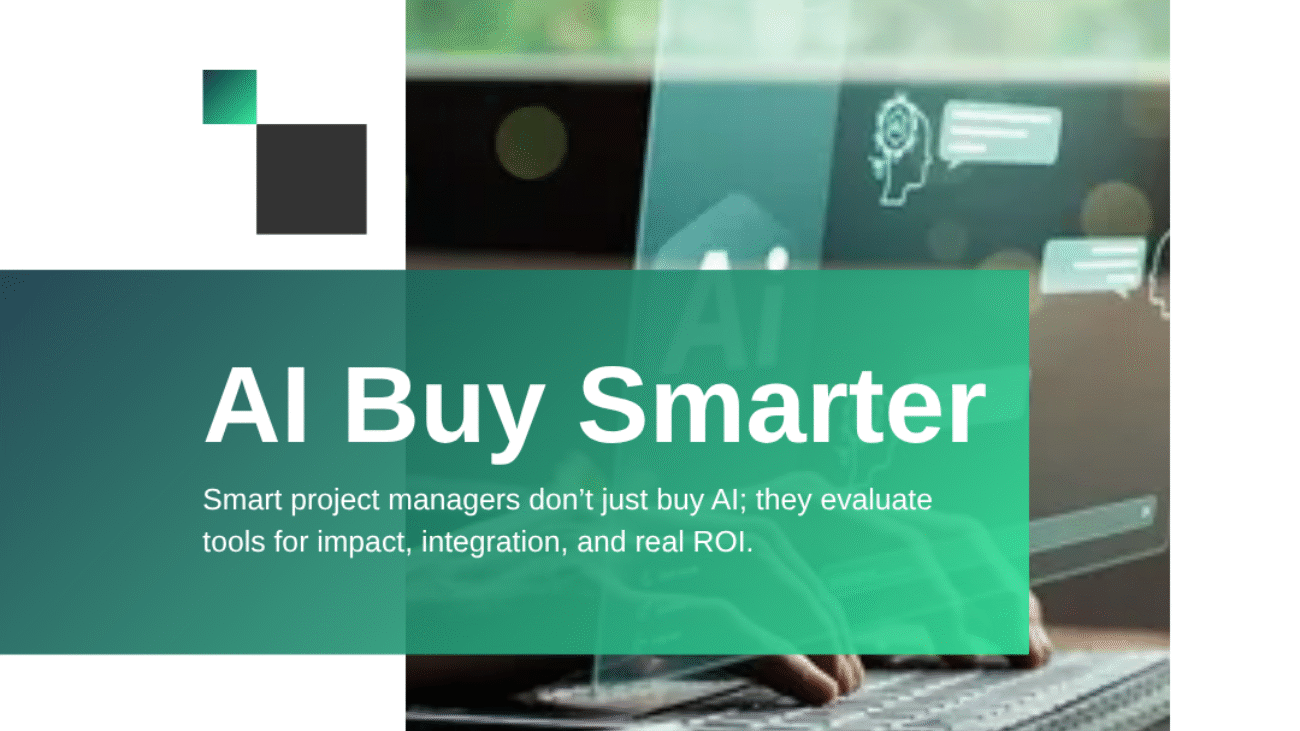The AI wave isn’t just coming, it’s already here. From automating workflows to generating insights in seconds, AI-powered tools are reshaping how we manage projects. But in a market full of buzzwords and bold promises, not every AI tool delivers real value.

As a project manager, you’re expected to lead with clarity, not hype. That means knowing how to separate shiny tech from strategic investment. In this blog, we walk you through the key checkpoints every smart project manager should consider before buying AI software.
1. Start with the Problem, Not the Product

Many teams fall into the trap of buying AI software simply because “everyone else is doing it.” That’s a mistake.
Before even looking at features, ask:
🔹 What specific problem am I solving?
🔹 Will AI address this need better than existing tools or processes?
When you define the pain point first—whether it’s time-wasting manual tasks, decision delays, or data blind spots you’re more likely to choose a tool that adds real value.
2. Demand Explainable AI
AI that can’t explain its own decisions is risky. In high-stakes environments, blindly trusting algorithms isn’t just unwise; it’s dangerous.

Smart PMs look for tools with:
- Transparent decision models
- Audit trails
- Explainable AI dashboards
This is especially critical in industries like finance, healthcare, and legal, where compliance and accountability are non-negotiable.
3. Evaluate Integration Capabilities

Even the most powerful AI tool is useless if it doesn’t work well with your existing ecosystem.
Ask:
- Does it integrate with our PM software (like Jira, Asana, MS Project)?
- Can it pull data from our CRM, ERP, or cloud storage?
- Does it offer APIs or plug-ins?
A tool that requires manual workarounds or creates data silos will slow your team down, not speed them up.
4. Assess Data Requirements & Security
AI tools are hungry for data. But can you feed it?
Check:
- What kind of data does the tool need?
- Do you already have that data in a usable form?
- Where is your data stored and processed?
- Is it compliant with your company’s security and privacy standards?
Without good data and strong protection, your AI investment could backfire.
5. Check for Scalability & Customization
An AI tool may work well today—but can it adapt as your projects, teams, or client needs grow?
Look for:
- User management features
- Role-based access
- Workflow customization
- Multi-project scalability
6. Vendor Support, Training & Trial Access
Support is often overlooked—but it’s critical. Choose vendors that offer:
- A free trial or sandbox environment
- Quick-response technical support
- User training, documentation, or onboarding tools
- Active user community or forum
This ensures your team can start fast and troubleshoot independently.
7. Calculate True Cost vs. Value
AI tools vary widely in price—but don’t let sticker shock or discounts distract you. Look deeper.
Factor in:
- Licensing & user fees
- Setup & integration costs
- Training time
- Productivity gain (ROI)
💼 An expensive tool that saves 100 hours pays for itself. A cheap one that wastes 10 hours a week? That’s a loss.
Final Thoughts
In today’s fast-moving digital world, AI is no longer optional—but strategic adoption is what separates effective project managers from the rest.
Smart PMs don’t chase AI—they master it.
By focusing on transparency, integration, data, and long-term value, you’ll make better decisions—not just for your project, but for your organization.
👉 Want Expert Guidance?
At Blue Peaks Consulting, we help project teams evaluate, implement, and integrate AI tools that align with real-world goals. From tool selection to team training — we make AI adoption simple and strategic.
Get in touch today. Your next-level project execution starts here.
Created by Zain Malik | Blue Peaks Consulting

 Cart is empty
Cart is empty 
Add a Comment